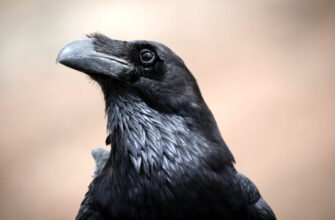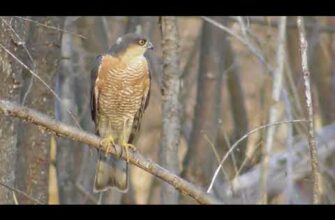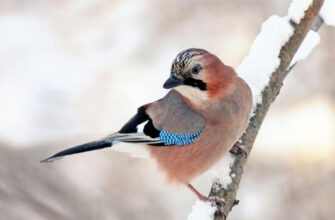Among the huge number of birds that inhabit our planet, it is impossible to ignore a truly regal person – the mysterious and amazingly beautiful flamingo bird. As soon as we pronounce this name, a vivid image appears before our eyes, a symbol of grace and grace. But the main thing that we know about these creatures is the unique color of their plumage. In adults, it varies depending on the species – from pale pink to almost scarlet.
View origin and description
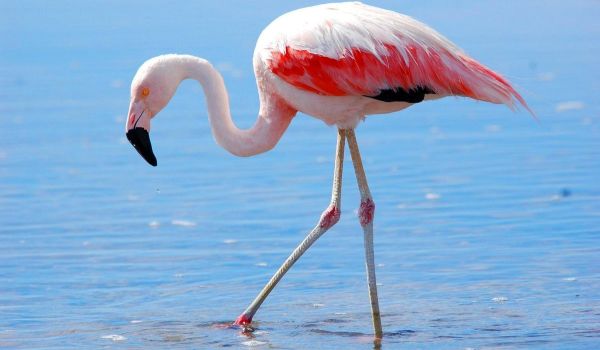
Photo: Flamingo
The history of the origin of these representatives of the terrestrial fauna has more than 30 million years. The homeland of the progenitors of modern flamingos are areas with a warm, even hot climate – Asia and Africa. However, the geography of their fossilized remains also covers areas of South and North America and Europe.
Due to their natural beauty, grace and amazing color, flamingos have long been admired by people, become heroes of legends and are endowed with supernatural properties. The ancient Egyptians revered these birds as sacred birds, worshiped them, brought gifts and dreamed of the fulfillment of desires, believing in their miraculous power. And, by the way, they considered them “birds of dawn”, and not at all “sunset”, as the famous song sings.
Video: Flamingos
The name “flamingo” itself is derived from the Latin word “flamma”, which means “fire”. This consonance allowed people to believe that the mythical phoenix bird, burning and reborn from the ashes, found its real embodiment in a proud representative of the feathered family with “fiery” plumage.
However, in reality, everything looks much more prosaic. In appearance, flamingos are similar to representatives of the legged cranes or herons, but they are not officially related to them.
Interesting fact: the closest relatives of flamingos are geese.
Yes exactly. Wildlife classifiers classified flamingos as anseriformes until specialists identified a special order for them – flamingos.
Appearance and features
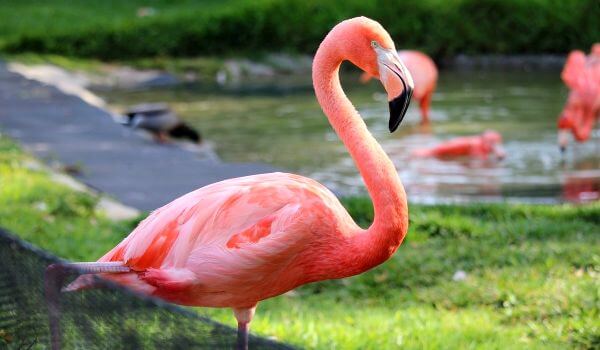
Photo: Flamingo Bird
The appearance of any representative of the animal world is determined, as a rule, by the characteristics of the lifestyle and habitat. Flamingos are no exception.
Nature endowed these birds with everything necessary for a comfortable existence in familiar conditions:
- Long strong legs to move through shallow water;
- Long neck for easy searching for food;
- Webbed feet, so as not to get stuck in the muddy bottom of reservoirs;
- Strong curved beak with denticles along the edges to strain food; >Wings to fly to warmer climes and places of food.
Flamingo is a wetland inhabitant. It weighs an average of 3.5-4.5 kg, but there are both larger and smaller individuals. Height – about 90-120 cm. The body is rounded, ending in a short tail. It bears the well-deserved title of the longest-legged and long-necked bird on the planet (in relation to the size of the body).
An interesting fact: the neck of a flamingo is curved in its usual state, but if it is stretched in a straight line, it will be equal to the length of the legs .
Flamingos have small wings. To rise into the air, he has to make a long run, and to keep his body in flight, he flaps his wings quite often and actively. In flight, the bird does not bend its neck and legs, but stretches it in one line. It flies swiftly, smoothly and gracefully.
Flamingo plumage is white, pink or scarlet. Interestingly, all representatives of this species are born white. The saturation of the color of the feather cover depends on the diet, namely, on the amount of carotene contained in the food consumed. The more it is, the more actively the flamingo’s body produces the pigment astaxanthin, and the brighter its color becomes.
An interesting fact: unlike most feathered representatives of the terrestrial fauna, female and male flamingos are colored the same.
The order includes the following types of flamingos:
- Pink (common);
- Red (Caribbean);
- James Flamingo ;
- Chilean;
- Andean;
- Small.
The largest representative of the species is the pink (ordinary) flamingo. Its weight is more than 4 kg, and its height reaches 140 cm. And the small flamingo is obviously the smallest of the flamingo-like order. It weighs almost half as much as its pink (ordinary) counterpart and hardly grows above 90 cm.
Where does the flamingo live?
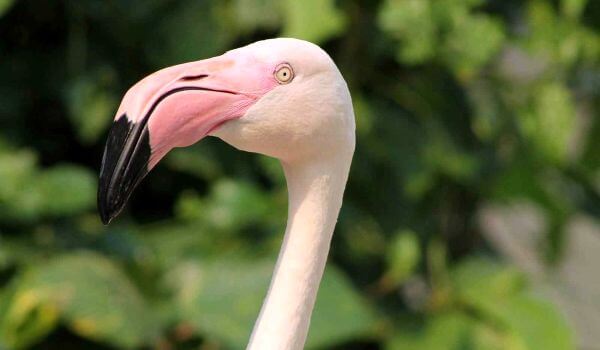
Photo: Pink Flamingos
Flamingos don’t live alone. They gather in huge groups, called colonies, and occupy convenient territories along the banks of shallow reservoirs or lagoons. They are thermophilic and prefer to settle in places where there is enough food and does not require long flights in search of food.
Interesting fact: some flamingo colonies number more than 100 thousand individuals.
The largest concentration of these birds is still, like millions of years ago, observed in Southeast and Central Asia and Africa. Nevertheless, they chose flamingos and many other territories suitable for their comfortable existence.
So, for example, pink (ordinary) flamingos nest in the southern regions of Spain and France, in India and Kazakhstan. This is the only species that makes long flights, and during migrations it can deviate quite significantly from the route, ending up in the northern regions – near St. Petersburg or on Baikal.
Very similar to the common flamingo – the Chilean species in the tropical and subtropical latitudes of the South American Andes. And on the islands of the Caribbean, colonies of very beautiful, brightest in color – red (Caribbean) flamingos nest.
High in the mountains, in the region of alkaline and salt lakes, located at an altitude of 4 thousand meters above sea level, the Andean flamingo lives. And its high-mountain counterpart – the James flamingo – until recently was considered an extinct species, until at the end of the last century its rare nesting sites were discovered in Bolivia, on Lake Colorado. Now he has chosen the territories of the Andean mountain plateaus in Peru, Bolivia, Chile and Argentina, but is still the rarest species of flamingos.
And on African salt lakes you can observe numerous colonies of the smallest representative of the “fiery” birds – small flamingos.
What do flamingos eat?
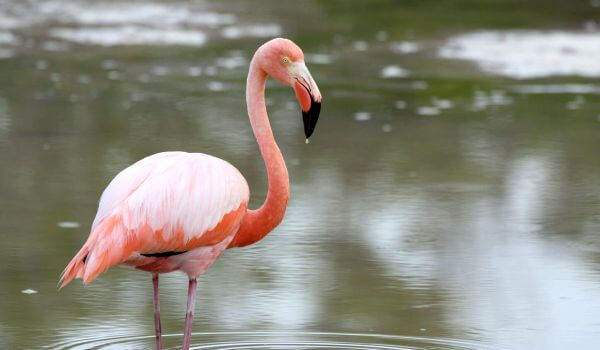
Photo: Beautiful flamingo
Food is a very important element in the life of a flamingo. Not only because food provides the energy necessary for full life activity. Their main advantage – the brightness of plumage – depends on its quality. The diet of flamingos is not particularly diverse.
For the most part, it consists of inhabitants of shallow water:
- Small crustaceans;
- Algae;
- Insect larvae;
- Worms;
- Mollusks.
Flamingos are large birds, which means they need a lot of food. There are plenty of planktonic organisms in salt lakes, it remains only to use natural abilities. The capture of food occurs with the help of a rather large and strong beak. In order to hold on to food, the flamingo twists its neck so that the top of its beak is down. Taking in water and closing its beak, the flamingo pushes the liquid out, as if “straining” it through the teeth located at the edges of the beak, and swallows the food remaining in the mouth.
As for the question of the influence of the diet on the color of flamingos, it should be noted that the very pigment canthaxanthin, which gives their feathers a pink color, is found in large quantities in blue-green and diatoms absorbed by birds, which, in turn, need it to protect against bright sunlight. Small brine shrimp crustaceans feed on the same algae, which also acquire a bright pink color, and then, when they get to flamingos for lunch, they increase the concentration of pigment in their body.
Flamingos are quite gluttonous. During the day, each individual eats an amount of food approximately equal to a quarter of its own weight. And since the bird colonies are quite large, their activity can be compared to a real water processing and purification station.
An interesting fact: it is estimated that one average settlement of pink flamingos can consume about 145 tons of food per day.
Different types of flamingos eat differently. It’s all about the structure of the beak. For example, the shape of the beak of Chilean or common flamingos makes it possible to hold mainly large objects in the mouth, in particular crustaceans. And the small flamingos living in Africa have a miniature beak with a thin “filter” that can filter out even single-celled algae.
Character and lifestyle features
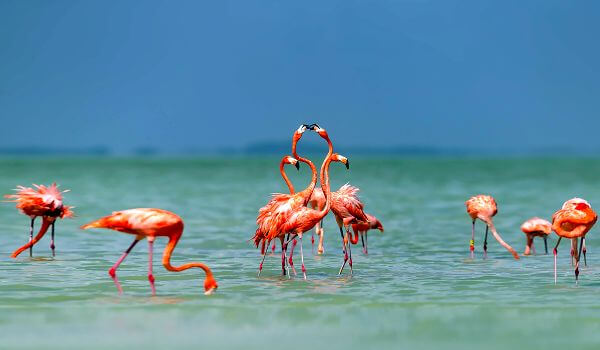
Photo: Flamingo animal
Of all the flamingo-like species, only pink (common) flamingos and individual colonies of other species living in the northern territories are migratory. For those who live in the south, there is no need to fly for the winter. In comfortable conditions, where their nests are located, there is enough heat and food.
Flamingo reservoirs are chosen mainly with salt water. Ideal – if there is no fish at all, but planktonic organisms are in abundance.
Salt and alkaline lakes are a rather aggressive environment. In addition, due to the presence of a large amount of bird droppings in the water, pathogens develop in it, which can cause various kinds of inflammatory processes. But the skin on the legs of flamingos is very dense and protects them from harmful effects.
An interesting fact: flamingos observe a hygiene regime: from time to time they go to freshwater sources to wash off salt and alkali and quench their thirst.
Flamingos are so preoccupied with the process of finding and eating food that it seems as if they do not care about anything else in the world. They are non-aggressive, conservative in their behavior and do not change their habits throughout their lives.
Social Structure and Reproduction
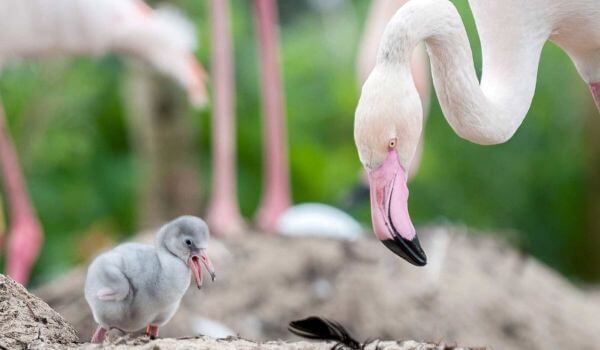
Photo: Flamingo chick
Flamingos nest in distinct groupings, each with highly synchronized egg-laying times . The social behavior of these birds has rather complex forms.
The mating season of flamingos begins with mass mating demonstrations. This happens about 8-10 weeks before the start of nesting. Flamingos show a certain aggression, trying to take the most advantageous position among their relatives during mating games.
When a pair is formed, the male and female become one. They protect each other in skirmishes, perform normal actions in sync, are constantly next to each other, and even shout as a duet! For the most part, couples maintain relationships for many years, becoming a real family.
The period of laying eggs in flamingos is extended in time and can last from early May to mid-July. Most often, birds arrange nests in shallow water, in the habitat of their colony. The material for the nests is shell rock, clay, silt, mud. But some individuals prefer to nest on rocks or lay their eggs directly in the sand, without making depressions.
Usually there are 1-3 eggs in a clutch (most often 2), which are incubated by both the female and the male. About a month later, chicks are born. They are born with gray plumage and an absolutely even beak. Chicks begin to acquire the characteristic features of flamingo-like features by the age of two and a half weeks. They have the first molt, the beak begins to bend.
During the first two months of life, the parents feed the babies. They produce the so-called “bird’s milk” – a special secret secreted by special glands located in the esophagus. It contains a large amount of fat, protein, some blood and plankton.
Interesting fact: “bird’s milk” for feeding newborn flamingo chicks is produced not only by females, but also by males.
After 2-3 months, already grown strong young flamingos are freed from parental care, take to the wings and begin to get their own food.
Natural enemies of flamingos
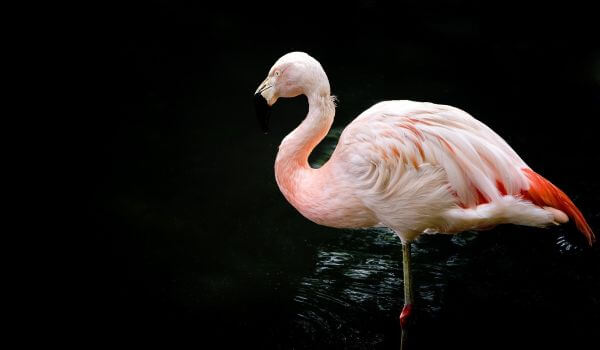
Photo: Flamingo bird
Flamingo colonies, numbering thousands and tens of thousands of individuals, are an attractive “feeder” for many predators. Such an accumulation of potential prey in one place is the key to a successful hunt.
The enemies of flamingos in the wild are the same as those of most birds. These are, first of all, large birds of prey – eagles, falcons, kites – which hunt mainly for chicks and young and destroy nests to feast on laid eggs. However, flamingo couples are good protectors and always work together. In addition, during the nesting period, mutual assistance is especially strong inside the colony, when birds rush to protect not only their own, but also other people’s clutches with future offspring.
Flamingos are also hunted by land-based predators. Wolves, foxes, jackals find their meat quite tasty, and the birds themselves are considered easy prey. It is enough to carefully sneak through shallow water closer to a group of several individuals and grab a gaping bird that did not have time to fly up. Often, predators settle near the colonies in order to have a constant source of food.
Flamingos are quite phlegmatic in everyday life, fighting qualities wake up in them only during the mating season and during nesting, therefore, despite active reproduction, bird colonies suffer quite large losses due to the constantly open hunting season for them.
Population and species status
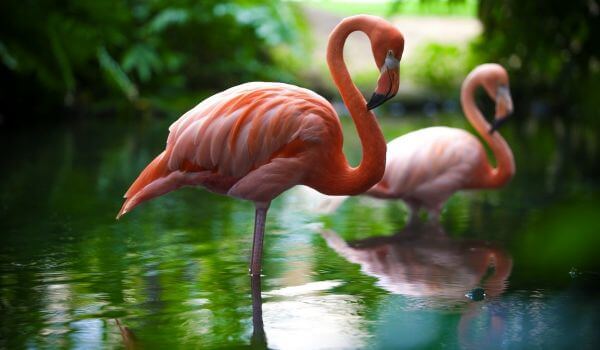
Photo: Greater Flamingo
However, terrestrial and winged predators are not the biggest threat to flamingos. All over the world, there is a decrease in the population of these birds, and the cause of these processes is not at all natural selection, but the destructive impact of man.
The unique plumage of a flamingo brings people not only aesthetic pleasure, but also quite tangible material income. Poachers catch and shoot birds in large numbers in order to put their feathers on jewelry and souvenirs.
Flamingo meat was not to the taste of a person, but eggs are considered a real delicacy and are served in the most expensive restaurants. To amuse exotic lovers and earn a lot of money, people ruthlessly destroy flamingo nests and devastate masonry.
Technological progress plays a significant role in reducing the population of these beautiful birds. A person is developing more and more new territories, building industrial enterprises, laying highways, completely not caring about what invades the usual natural habitats of birds. Flamingos are forced to leave their homes and look for other territories for living and breeding. And there are fewer and fewer places on our planet suitable for this.
The inevitable pollution of the environment – air, soil, water bodies – cannot but affect the life of birds. They experience the negative impact of these factors, fall ill, are deprived of a sufficient amount of quality food and, as a result, die in large numbers.
Flamingo protection
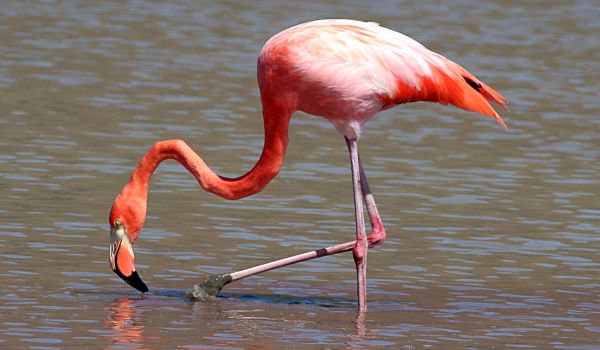
Photo: Flamingo Red Book
Back in the middle of the last century, the James flamingo was considered an extinct species. But in 1957, scientists discovered its small population in Bolivia. Protective measures were developed, and today the number of these birds has increased to 50 thousand individuals. Approximately the same population has a population of Andean flamingos. If the birds are not protected and no measures are taken to increase their number, then in the near future both species are threatened with extinction.
Under the influence of adverse factors, the population of the most famous species, the pink (common) flamingo, is also decreasing. All this led to the fact that the birds were immediately included in several conservation lists, including the Red Book of Russia.
Flamingos are one of the most unusual, beautiful and friendly representatives of birds that inhabit the Earth. They are faithful partners, caring parents and reliable defenders for their relatives. Since ancient times, their colonies exist in harmony with the surrounding world and do not cause the slightest harm to humans.
If you respect their way of life, protect their habitats and, with the rights of the strong, provide protection from adverse factors, humanity will be rewarded by the presence in the wild nature of the planet of a unique creature, the owner of an amazing plumage, a fiery “bird of dawn” – a graceful and graceful flamingo bird.

